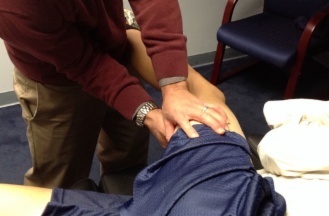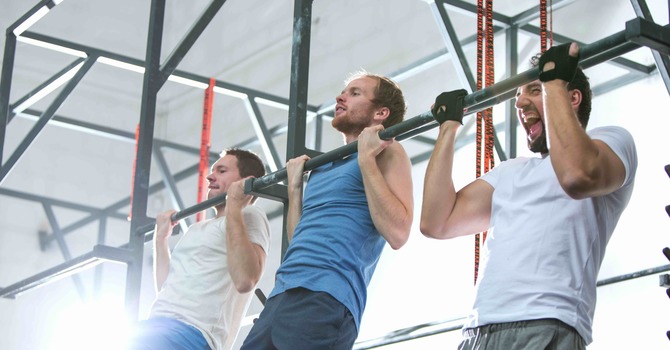
Medical experts classify injuries in two different ways: “acute” and “overuse.”
An acute injury is something that has a single, identifiable cause; for example, if you fall off a ladder and break your arm, that’s an acute injury. With an acute injury, there’s a single instance of trauma, which can be treated and repaired, enabling you to go on with your life (and giving you newfound respect for ladders).
An overuse injury, on the other hand, occurs because of repeated use to a muscle, tendon, or other body part. An example would be carpal tunnel syndrome. If you struggle with carpal tunnel syndrome, there was no single instance that “gave” you the condition; rather, it was an accumulation of thousands of tiny traumas.
This can make overuse injuries some of the toughest conditions to treat. After all, if you’re overusing something, chances are it’s part of a movement that’s integral to your life. If you suffer from plantar fasciitis, for example, a doctor can’t very well tell you to give up walking.
There’s a new treatment option that’s showing promise for overuse injuries, however. It’s called A.R.T., for “active release techniques,” and it might be just what the doctor ordered for overuse injuries.
What is A.R.T.?
First off it isn’t a “thing;” rather, it’s a collection of upwards of 500 techniques, all based on a common belief. That belief is that scar tissue can build up in overused tissue, leading to restricted movement, trapped nerves, and chronic pain.
If you go to an active release practitioner to treat your overuse injury, they will work with you to find the source of your pain. Then, using a mixture of manual manipulation and patient movement, they’ll help you break up the scar tissue, which will free your muscles and tendons to work freely and without pain.
Who Should Consider Active Release Techniques?
A.R.T. is designed for anyone suffering from an overuse injury. Some common ailments that could benefit from the technique include:
- Headaches
- Back & Neck Pain
- Plantar Fasciitis
- Carpal Tunnel Syndrome
- Sciatica
- Tennis Elbow
- Knee Problems
As you can see, these are some of the most commonly suffered physical problems. It’s no wonder, then, that ART is considered so revolutionary – in fact, some medical professionals have called it “the fastest road to recovery out there.”
What is a Treatment Session Like?
Since every injury is unique, and there are so many protocols involved so no two treatments are ever really the same. However, here’s what you could expect from the average Active Release Techniques session.
First, you’ll explain to the practitioner what hurts. After a few questions to determine the possible cause of the injury, the practitioner will begin manipulating the injury to find the exact source of the pain – that is, where the scar tissue has accumulated.
Then, the practitioner will use very specific tension and pressure to help break up the scar tissue. This will be combined with precise patient movement designed to restore range of motion to the affected area.
There may be some slight soreness or discomfort as the scar tissue is released, not unlike what you’d feel in a deep tissue massage. However, as the tension is released and full capability is restored, you might find yourself pain free for the first time in quite a while.
How Do I Find an A.R.T. Practitioner?
If you suffer from an overuse injury that you think would benefit from active release, contact us today. We’ll work with you to find the source of your problem, and work out a treatment plan that will get you on the road to recovery as soon as possible.
Don’t spend another day in pain, suffering from an overuse injury. Help is available – in fact, all it might take is a work of A.R.T. If you’re uncertain whether this innovative technique can help you, call us for a complimentary phone consultation.



